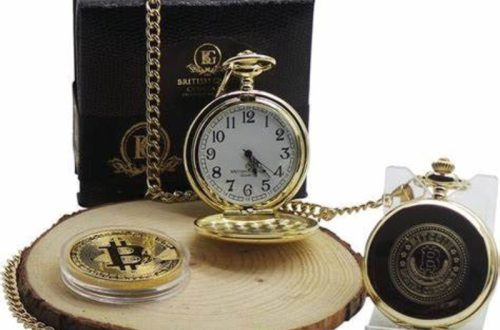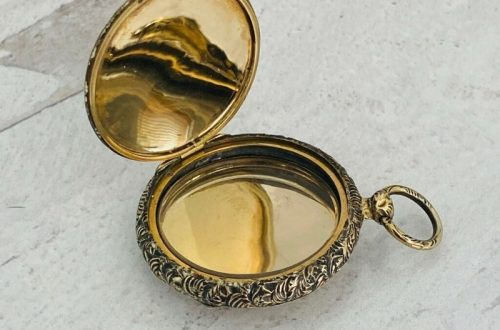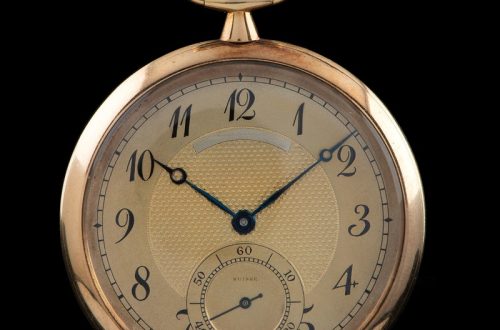In a world dominated by digital efficiency, mechanical watches stand as a testament to human ingenuity and a celebration of timeless design. While quartz watches may boast superior accuracy, there’s a certain magic to a meticulously crafted mechanism, powered by the wearer’s movement or a carefully wound spring. For the watch aficionado, mechanical timepieces represent the pinnacle of watchmaking, offering unparalleled precision and enduring quality.

Part 1: The Enchantment of Mechanical Watches
Art and Engineering:
A mechanical watch is more than just a tool for telling time; it is a miniature marvel of engineering where minuscule gears and springs work in perfect harmony to ensure the precise measurement of time. The intricate movements, often visible through a transparent case back, not only provide a captivating view but also showcase the remarkable skill and artistry of the watchmaker. From the delicate balance of a tourbillon to the intricate engravings on a bridge, each detail embodies the rich heritage of watchmaking, illustrating the meticulous craftsmanship and attention to detail that define these timepieces. Every component, from the meticulously finished screws to the precisely aligned jewels, reflects the dedication and expertise required to create a mechanical watch, capturing the essence of a timeless tradition that continues to captivate enthusiasts and collectors around the world.
Enduring Legacy:
Mechanical watches are designed to stand the test of time, unlike their quartz counterparts. With proper care and maintenance, these timepieces can become cherished heirlooms, carrying not only sentimental value but also a tangible connection to the past. Owning a well-maintained mechanical watch fosters an enduring appreciation for the artistry and craftsmanship involved in its creation, providing a tangible link to a legacy that transcends fleeting trends and passing fashions. The meticulous attention to detail, the longevity of their construction, and their ability to withstand the passage of time make mechanical watches more than just timekeeping devices; they are enduring symbols of tradition and heritage. By preserving and passing down these masterpieces, we not only honor the craftsmanship and dedication of their makers but also ensure that future generations can appreciate the lasting beauty and timeless allure of mechanical watches.

Part 2: Hallmarks of a Fine Mechanical Watch
The Movement:
The heart of a mechanical watch is its movement, the intricate assembly of gears, springs, and regulators that govern its timekeeping. There are two main types of mechanical movements: automatic and manual-wind. Automatic watches are self-winding, using the wearer’s movement to power the mainspring. Manual-wind watches, on the other hand, require the crown to be wound periodically to maintain operation. When choosing a mechanical watch, the movement’s pedigree and the number of jewels (bearings that reduce friction) are key factors to consider. A high-quality movement from a renowned Swiss watchmaker will typically boast a higher jewel count and superior accuracy.
Complications:
While the primary function of a watch is to tell time, certain mechanical watches offer additional features known as complications. These can range from simple date displays to intricate moon phases or perpetual calendars. Complications add a layer of complexity, value, and allure to timepieces, particularly for collectors who appreciate the technical mastery involved in creating these intricate features. The craftsmanship and engineering required to integrate and synchronize these additional functionalities within a confined mechanical space, while maintaining precision, demonstrate the expertise and artistry of the watchmaker. These complications are not only functional but also serve as a testament to the tradition and innovation of mechanical watchmaking, showcasing the intricate complexities that elevate these timepieces to works of art. As a result, the presence of complications enhances the appeal and value of mechanical watches, enriching the wearer’s experience and contributing to the timeless fascination with these intricate horological creations.

Part 3: Maintaining Your Mechanical Masterpiece
Regular Servicing:
Similar to any sophisticated machine, a mechanical watch needs regular servicing to uphold its peak performance. Typically, this involves a skilled watchmaker disassembling the movement, meticulously cleaning it, lubricating the parts, and verifying its accuracy. Adhering to the manufacturer’s advice for service intervals is crucial to ensure the longevity and reliability of your timepiece. By following the prescribed schedule for maintenance, you can proactively address any potential issues, prevent unnecessary wear and tear, and safeguard the intricate mechanisms within your watch. Additionally, timely servicing can help preserve the value of your timepiece and maintain its precision and functionality for years to come. Embracing a proactive approach to the care and maintenance of your mechanical watch not only preserves its performance but also contributes to the enduring appreciation of its craftsmanship and longevity.
Careful Handling:
Mechanical watches, like any precision instrument, are susceptible to wear and tear. To maintain optimal performance, it’s important to avoid exposing your watch to extreme temperatures, sudden shocks, and magnetic fields. Additionally, being mindful of water resistance ratings is crucial, and unless your timepiece is specifically designed for diving, it’s best to avoid submerging it in water. By handling your watch with care and following proper maintenance guidelines, you can extend its longevity and ensure it continues to function smoothly for years to come. Regularly checking the seals and gaskets, servicing it at recommended intervals, and keeping it away from harsh conditions are all essential practices for preserving the integrity of your mechanical watch. Adhering to these precautions will help safeguard your timepiece and protect its intricate mechanisms, allowing you to enjoy its precise timekeeping for generations.

Part 4: Selecting the Perfect Mechanical Watch
Define Your Needs:
Consider how you’ll be using the watch. Do you need a dress watch for formal occasions, or a more robust timepiece for everyday wear? The ideal watch will complement your lifestyle and taste. If you crave the convenience of an automatic movement, a dress watch from a brand like Seiko or Tissot offers a good balance of style and functionality. For a tool watch built for adventure, brands like Rolex or Omega are known for their durability and performance.
Invest in Quality:
A mechanical watch is an investment. While budget-friendly options exist, be prepared to spend a significant amount for a timepiece from a reputable brand with a high-quality movement. Look for watches with movements from established Swiss watchmakers like ETA or Sellita, known for their reliability and precision.

Owning a mechanical watch transcends simply telling time. It’s about appreciating the artistry and engineering that goes into creating a timeless piece. With proper care, your mechanical watch can be a cherished companion for years to come, ticking away as a testament to human ingenuity and a reminder of a bygone era of craftsmanship.


